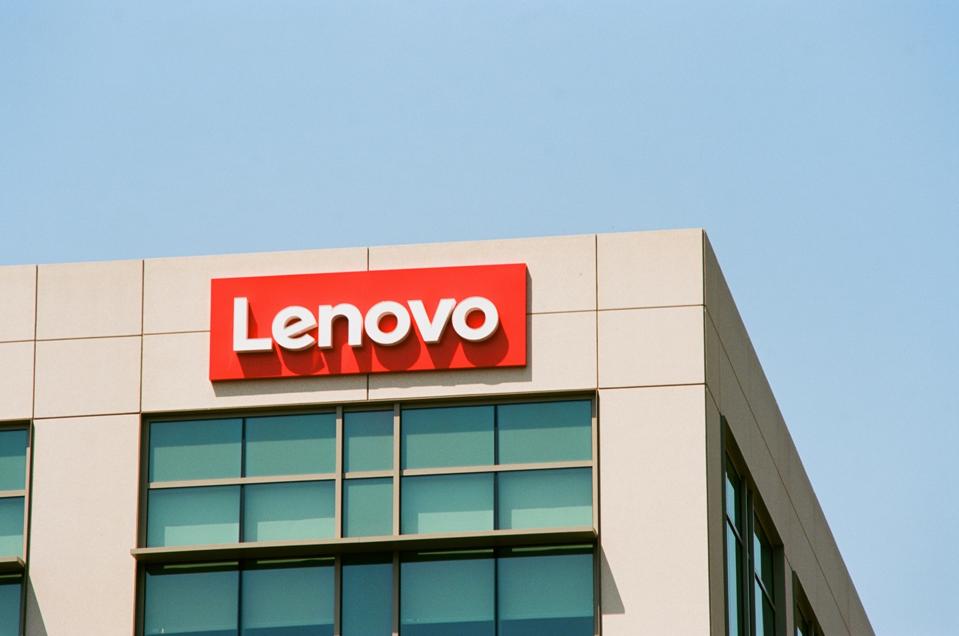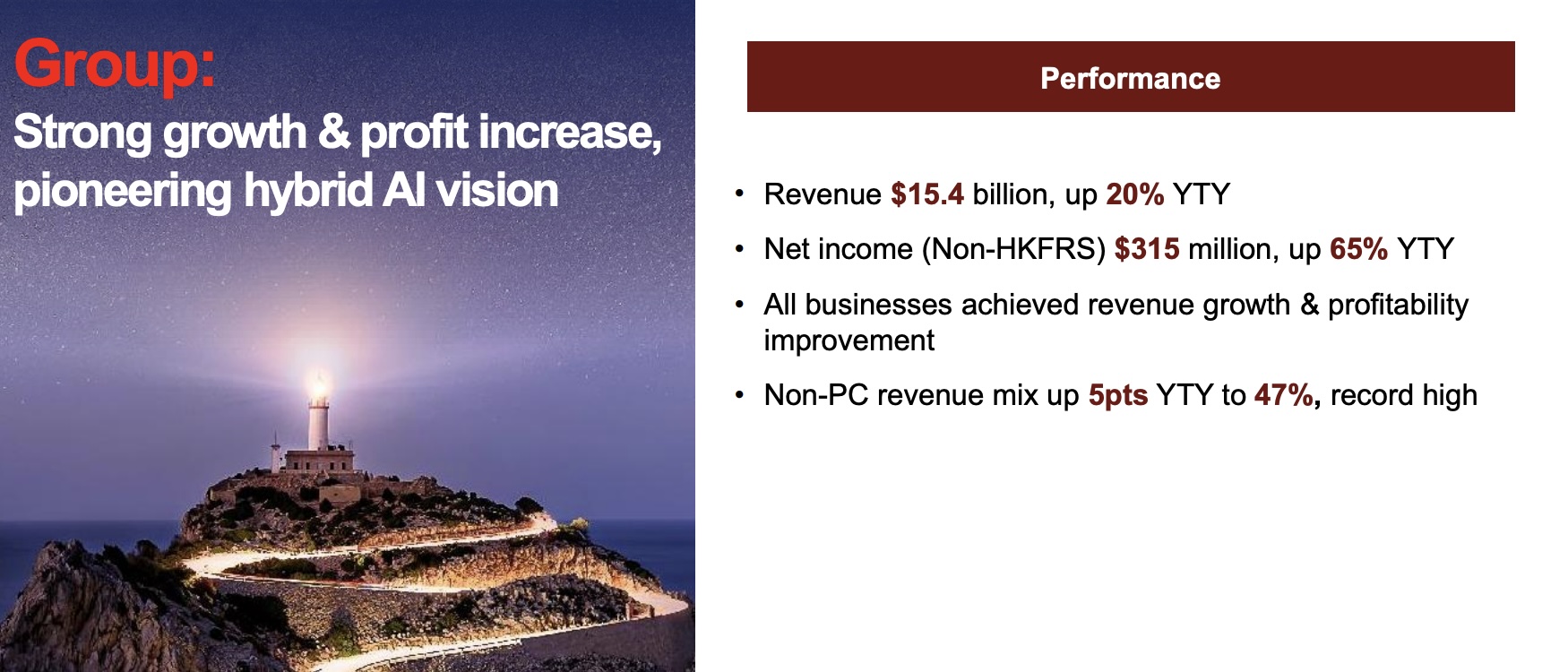Lenovo unveiled a new suite of services aimed at accelerating businesses’ AI transformation. These services include GPU resources on demand, AI-driven systems management, and advanced liquid cooling services.
Key highlights of the announcements include:
- Lenovo TruScale GPU-as-a-Service (GPUaaS): Lenovo’s new pay-as-you-go service provides businesses with immediate, scalable access to NVIDIA GPUs, addressing the high costs and complexity of acquiring and maintaining AI hardware.
- Lenovo XClarity One: The first solution to combine AI and unified systems management, this platform uses predictive analytics to optimize IT operations, prevent system failures, and enhance security across data centers and edge devices.
- Lenovo Power and Cooling Services: Focusing on energy efficiency and sustainability, Lenovo’s advanced liquid cooling services help its customers manage high-performance AI computing while reducing power consumption and operational costs.
Lenovo TruScale GPU-as-a-Service
Lenovo TruScale GPU-as-a-Service is a scalable, pay-as-you-go solution that provides businesses with on-demand access to powerful GPU resources for AI and machine learning workloads. The new service reduces the barriers to acquiring and maintaining high-cost GPU infrastructure, enabling organizations to leverage advanced computing capabilities without significant upfront investments.
Key features of Lenovo TruScale GPUaaS include:
- On-Demand GPU Resources: Lenovo customers can access NVIDIA GPUs, including the NVIDIA H100 and L40S, as needed. This allows organizations to flexibly scale their AI and HPC workloads based on real-time demand.
- Cost Efficiency: By adopting a pay-as-you-go model, companies can avoid the capital expenditures typically associated with acquiring GPU hardware. This enables businesses to align their GPU usage costs with actual workloads, optimizing performance and expenses.
- Simplified Management: TruScale GPUaaS integrates Lenovo’s Intelligent Computing Orchestration (LiCO) technology, which provides workload management and scheduling. LiCO helps businesses manage consumption and costs across different projects, allowing multiple organizations to share GPU resources efficiently.
- Flexible Deployment Options: Lenovo offers the service in various configurations, including on-premises or a colocation environment, providing flexibility based on business needs.
- Accelerated AI Innovation: The service delivers immediate access to cutting-edge NVIDIA GPUs, helping enterprises deploy and scale AI applications more quickly and making AI-powered innovations more accessible across industries.
Lenovo XClarity One
Lenovo XClarity One is a comprehensive, unified platform that combines AI-driven systems management with advanced infrastructure management capabilities. It’s designed to streamline the operation and management of IT environments, from data centers to edge devices, using AI to enhance reliability, security, and scalability.
Key features of Lenovo XClarity One include:
- AI-Powered Systems Management: XClarity One utilizes Lenovo’s AIOps (AI for IT Operations) to automate and optimize IT management, including AI-driven predictive analytics to detect potential system failures and performance issues before they occur.
- Unified Platform: The solution consolidates IT management tasks into a user-friendly interface, enabling IT teams to manage the full lifecycle of connected devices across the data center and edge environments.
- Predictive Failure Analytics: The platform employs three predictive engines that provide fast and accurate failure detection. The solution informs IT teams of both potential and current issues, allowing them to proactively address problems and avoid downtime or unnecessary maintenance costs.
- Enhanced Security: XClarity One is built with a zero-trust security architecture, ensuring all users are authenticated via one-time passwords (OTPs) and role-based access controls. This strengthens security across the entire infrastructure, limiting potential attack surfaces and minimizing risks.
- Scalability: The platform’s hybrid cloud architecture is designed to grow with the business. It can scale to accommodate expanding IT infrastructure, from data centers to edge devices.
- Smarter Support: Lenovo XClarity One offers AI-powered “Smarter Support,” providing advanced troubleshooting and resolution tools. This helps IT teams address issues more efficiently by leveraging AI insights and recommendations.
Lenovo XClarity One delivers an intelligent, self-optimizing infrastructure management system that simplifies IT operations, enhances operational efficiency, and supports the rapid growth and demands of AI applications across various industries. It also reduces costs and improves security.
Lenovo Power & Cooling Services
Lenovo Power & Cooling Services is a suite of offerings that optimize energy efficiency and enhance the performance of AI-driven data centers by leveraging advanced cooling technologies. These services help organizations meet the demanding energy and cooling needs of AI and HPC workloads while also supporting sustainability goals.
Key features of Lenovo Power & Cooling Services include:
- Advanced Liquid Cooling with Lenovo Neptune: Lenovo’s Neptune cooling technology uses direct liquid cooling to manage the heat generated by high-performance computing systems. By cooling components more efficiently than traditional air-cooling methods, Lenovo says Neptune can reduce power consumption by up to 40%, leading to significant energy savings and improved operational efficiency.
- Real-Time Energy Efficiency Monitoring: The services provide real-time insights into energy usage and cooling efficiency within the data center. By continuously monitoring power and cooling systems, Lenovo helps organizations optimize energy consumption and reduce operational costs while maintaining peak performance for AI workloads.
- AI-Ready Infrastructure: Lenovo Power & Cooling Services support the high-power demands of AI workloads. The integration of liquid cooling technology ensures that data centers can handle the increased computing density required for AI and machine learning applications.
- Sustainability Focus: The new services align with the growing focus on sustainability within IT operations. By reducing power consumption and optimizing cooling systems, Lenovo helps organizations minimize their carbon footprint, contributing to broader corporate sustainability goals.
- Comprehensive End-to-End Services: Lenovo offers a full range of advisory and implementation services to help businesses integrate power and cooling solutions seamlessly. These include an in-depth assessment of power usage, cooling needs, and energy efficiency within the data center, followed by recommendations and implementation of improvements to reclaim unused cooling capacity and defer capital expenses.
- Proactive System Management: Lenovo Power & Cooling Services proactively manages power and cooling systems, improving the reliability of the data center infrastructure. This includes identifying areas for efficiency improvement and managing systems to ensure they are operating at optimal levels.
Analysis
Lenovo’s announcements continue the company’s strategic pivot towards becoming a key enabler of AI across industries, building on the growing demand for flexible, scalable, and cost-effective AI infrastructure.
Several aspects of the announcement are worth analyzing:
- Market Implications: Lenovo’s focus on GPU-as-a-Service taps into the increasing need for high-performance computing resources required by AI and machine learning workloads. The pay-as-you-go model aligns with the shift towards as-a-servicebusiness models, allowing businesses to dynamically scale computing resources based on their AI workloads. This significantly lowers the barrier to entry for small- and mid-sized enterprises looking to leverage AI while also attracting larger organizations that want to avoid the high costs of upfront investments in GPU infrastructure.
- AI Management and Predictive Analytics: With XClarity One, Lenovo introduces a powerful AI-driven management solution that automates and optimizes IT operations. This move shows Lenovo’s continuing efforts to capitalize on AI for IT operations (AIOps), a rapidly growing AI segment focused on improving system reliability, security, and scalability through automation.
- Sustainability Focus: Lenovo’s new Power and Cooling Services show Lenovo’s commitment to sustainability in AI infrastructure. With enterprises under increasing pressure to meet ESG standards, Lenovo’s advanced liquid cooling technology and energy efficiency solutions offer a competitive edge. Businesses can adopt AI while simultaneously reducing power consumption and achieving long-term cost savings, which is crucial as AI workloads become more demanding.
- Competitive Positioning: Lenovo’s announcement brings it into direct competition with other major players in the AI infrastructure space, such as NVIDIA, Microsoft Azure, and Google Cloud, all of which have been building out their AI capabilities through cloud-based solutions.
- Strategic Importance for Lenovo: The announcements solidify Lenovo’s strategy of becoming an essential player in AI infrastructure. With AI becoming a top investment priority for nearly every business, Lenovo’s AI services portfolio enables companies of all sizes to harness the benefits of generative AI and machine learning more effectively. By combining AI infrastructure, predictive systems management, and energy-efficient cooling, Lenovo addresses critical pain points for enterprises seeking to stay competitive in an AI-driven world.
Lenovo’s AI-driven services will likely gain significant traction, especially among enterprises seeking flexible and scalable AI solutions without the burden of initial capital expenditure.
The combination of cost-efficiency, sustainability, and ease of use positions Lenovo as a key player in the ongoing AI transformation. However, the company must continue refining its messaging and education around AI adoption, particularly for smaller enterprises that may find the AI landscape complex.



